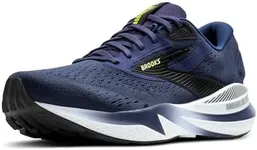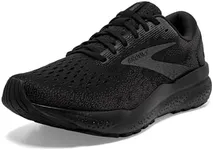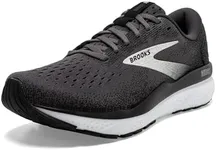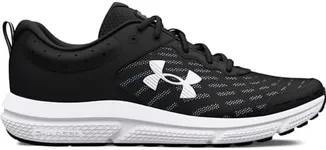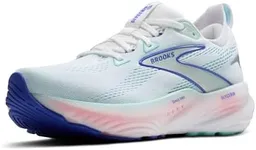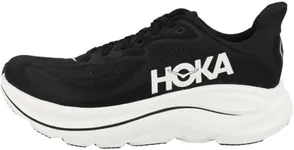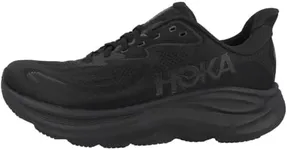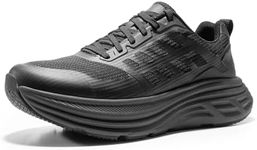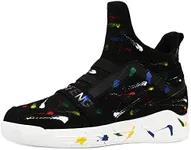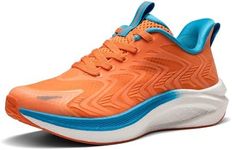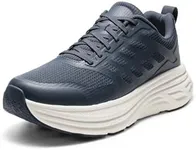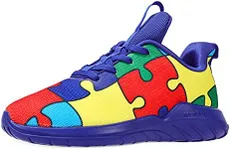Buying Guide for the Best Running Shoes
Choosing the right running shoes is important because comfortable and supportive footwear can make your runs smoother, prevent injuries, and even improve your performance. To pick the best pair for you, it’s helpful to know a bit about your running style, the type of surfaces you run on, and any personal needs you may have like arch support or cushioning preference. Understanding key features will help you sort through options and find shoes that match both your feet and your goals.CushioningCushioning refers to the amount of padding in the sole of the running shoe, especially under the heel and forefoot. This is important because it affects how much shock is absorbed with every step, influencing comfort and protection from impact. Shoes generally range from minimal to maximal cushioning: minimal cushioning offers a lighter, more ground-contact feel, suited for experienced runners or those who prefer to feel the ground beneath them, while maximal cushioning provides the most softness, good for long distances, recovery runs, or those prone to joint pain. To choose what’s right for you, think about how much comfort versus ground feel you want, how far you run, and any past issues with pain or discomfort.
Arch SupportArch support is how the shoe conforms to and supports the arch of your foot. It matters because everyone’s arch shape is different—some people have flat feet, others high arches. Shoes typically provide neutral support (for normal arches), stability support (for low arches or flat feet to prevent excess rolling in), or motion control (for severe overpronation). To pick the right support, check your arch by looking at your footprint: a full footprint usually means flat feet, while a narrow footprint through the middle suggests high arches. Knowing your arch type guides you in choosing shoes that keep your feet comfortable and aligned.
Fit and WidthFit and width refer to how snugly and comfortably a shoe wraps around your feet, as well as the space in the toe box and across the midfoot. This is important because shoes that are too tight can cause blisters and discomfort, while shoes that are too loose can lead to instability and slipping. Most brands offer different widths (narrow, regular, wide), so it’s good to try on different pairs or recognize if you usually need a bit more or less room. Your right choice depends on how your foot feels inside the shoe—look for a secure heel, enough space to wiggle toes, and no pinching along the sides.
Heel DropHeel drop is the difference in height between the heel and the toe in a shoe. This spec is crucial for your running form and comfort. A higher heel drop (around 10-12mm) promotes landing on the heel and can help reduce strain on the Achilles tendon. A lower drop (0-6mm) encourages a more natural stride and midfoot or forefoot striking. If you’re used to traditional shoes or are prone to calf issues, a moderate to higher drop may be best, while if you want a more minimalist or natural running experience, a low drop could be a better fit. It’s best to stick with what matches your running style unless you plan to transition gradually.
Outsole Grip and DurabilityThe outsole is the bottom part of the shoe that touches the ground, and its grip and durability matter because they affect traction and how long the shoes last. Outsoles with deeper lugs or special rubber compounds are great for trail or off-road running, while flatter, smoother soles suit road surfaces. If you mostly run on roads or treadmills, look for a durable but smooth outsole. For mixed or rugged terrain, opt for more aggressive grip patterns. Match the outsole to the most common surface you plan to run on for the best balance of safety and longevity.
BreathabilityBreathability is how well the shoe’s upper lets air in and moisture out. Good breathability is important to keep your feet cool, dry, and comfortable, especially during longer runs or in warm weather. Shoes with mesh or ventilated uppers tend to offer the best airflow, reducing risk of blisters and overheating. If you run in mainly hot or humid conditions, prioritize highly breathable shoes, while in colder climates, you might prefer shoes with a bit more material to keep your feet warm.
